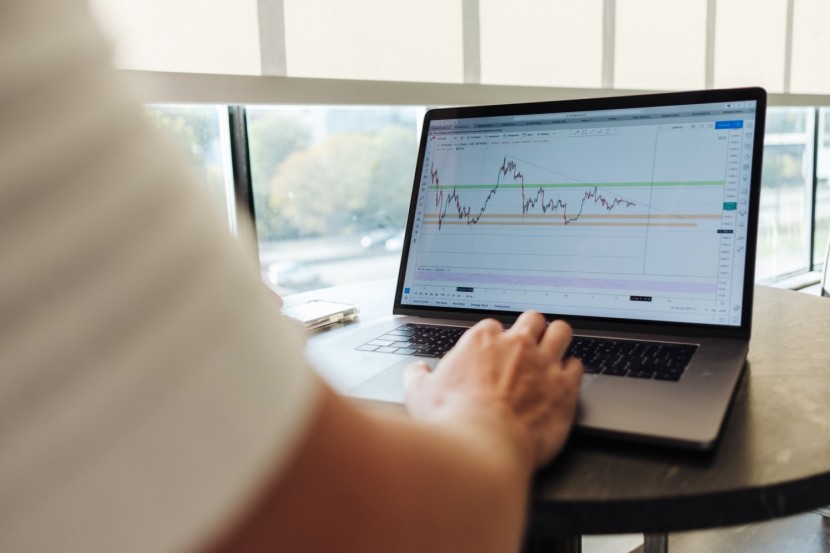
The Japanese trading industry has significant contributions to the global finance and trading sectors. Many of the most common methods we use in trading - from chart styles like the Candlestick, the Renko, the Kagi, and the Heiken Ashi to Ichimoku-like trend indicators - come from Japan. The Ichimoku Cloud indicator is known to be one of the most comprehensive trend indicators since it can be seen as a full trading device on its own.
With multiple components that help you define the pattern and when you enter and leave a trade, Ichimoku is a full trading toolbox inside a single predictor. The metric overcomes the challenge of having to use various metrics to construct a trading system since it lets you understand market trends at first glance. Interestingly, this is one of the basic indicators usable on all common charting platforms.
We will discuss the elements of Ichimoku, how to view them, and how to make the most of them when it comes to discovering trading opportunities.
What is Ichimoku Kinko Hyo?
'Ichimoku' or Ichimoku Kinko Hyo, translates to 'one look equilibrium chart', was created by the Japanese journalist Goichi Hosoda (1898-1982), which was published in his book in 1969. An equilibrium chart, the Ichimoku Kinko Hyo indicates trends in price momentum and forecasts the areas of support and resistance.
Ichimoku has come to the mainstream, and the appeal amongst novices and seasoned traders has grown. Known for its uses in futures and equities, Ichimoku displays more data points to have higher accurate market activity. The technical indicator provides several assessments and integrates three metrics into one table, enabling the trader to make the most educated decisions.
How to Use the Ichimoku Indicator
In this article, we'll guide you through the process of using the Ichimoku indicator to make great trading decisions. Ichimoku is a very flexible and insightful trading predictor. But you can quickly feel confused by the simplicity of the indicator if you don't know how to view the different lines and shades.
The indicator has the default settings as 9, 26, and 52, representing the old Japanese workweek, which was 6 working days per week. Thus, 9 cycles are 9 trading days or one and a half weeks; 26 are 26 trading days in one whole month, and 52 are trading days in two full months.
Parameters / Components
The Ichimoku indicator consists of 5 lines and 4 different parts:
Tenken Sen / Conversion Line and Kijun Sen / Base Line
Senkou Span A (SSA) and Senkou Span B (SSB)
Chinkou Span (or the Lagging Span)
Kumo or the Cloud
Tenken Sen / Conversion Line and Kijun Sen / Base Line
Tenken Sen / Conversion Line: It is at the mid-point of the 9-period high and low.
Kijun Sen / Base Line: It is at the mid-point of the 26-period high and low.
The conversion and baselines indicate high and low in the middle of the 9th and 26th cycles. This means that they look back at the 9th and 26th periods (candles), take the highest and lowest price levels over that time, and then map the line in the middle of the range.
Conversion and Baselines have two purposes: first, they serve as reinforcement and resistance to movements, much as moving averages. Second, they know momentum. When the price is trading above the two points, and when the conversion line is above the baseline, it signals an upbeat trend. This is also somewhat similar to running averages: while the shorter moving average is above the longer moving average, it means that the momentum is rising and rising.
Senkou Span A (SSA) and Senkou Span B (SSB)
Span A (SSA): It forms the faster cloud boundary. The Span A is at the middle of the Conversion Line and the BaseLine.
Span B: It forms the slower Cloud boundary. The Span B is at the middle of the 52-period high and the 52-period low.
Chinkou Span (or the Lagging Span)
Chinkou represents just the current price but adjusted to 26 periods earlier. If the current price is over the previous price 26 periods ago, it is bullish. And if the current price is under the price 26 periods ago, it is bearish. When the Chikou period is close to the price, or when the business range is perceived to be in consolidation, or when there is no pattern.
The Cloud (Kumo)
This is the area between the lines of SSA and SSB and is always shaded in a color that fits the line on the right. Green is mostly used to represent a bullish color when the SSA is above the SSB. And when the SSA is below the SSB (the SSB is at the top), the cloud has a bearish hue that is normally red.
Conclusion
The Ichimoku Cloud is a robust predictor designed to create simple signals. Chartists should first use the cloud to assess the trend. If a pattern has been developed, acceptable signals can be calculated using the price plot, the Conversion Line, and the Base Line.
It is important to search for signs in the direction of a broader pattern. More signs can be identified when checking for a price to cross the baseline (or even the Conversion Line).
© 2025 HNGN, All rights reserved. Do not reproduce without permission.








